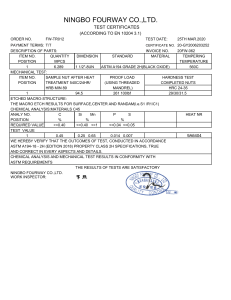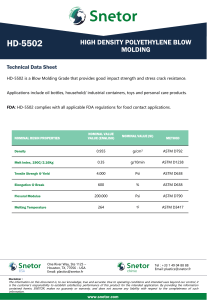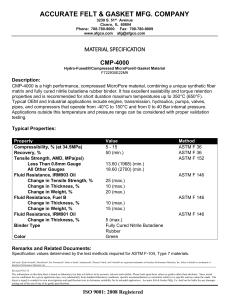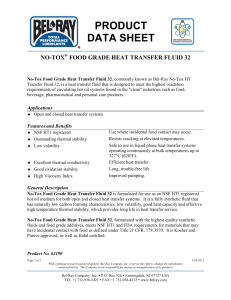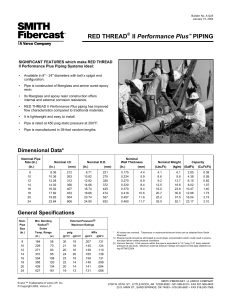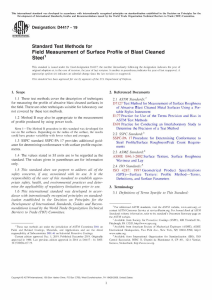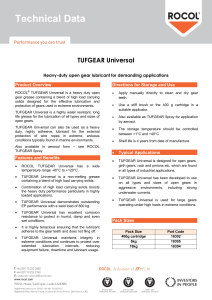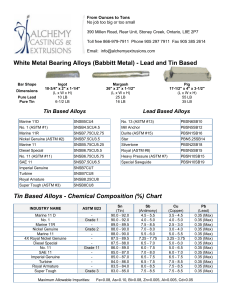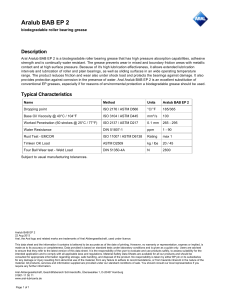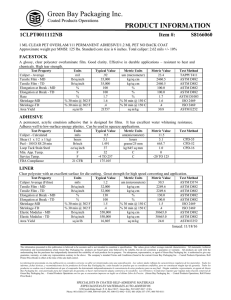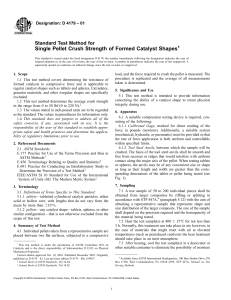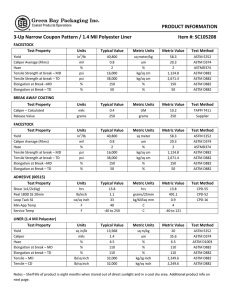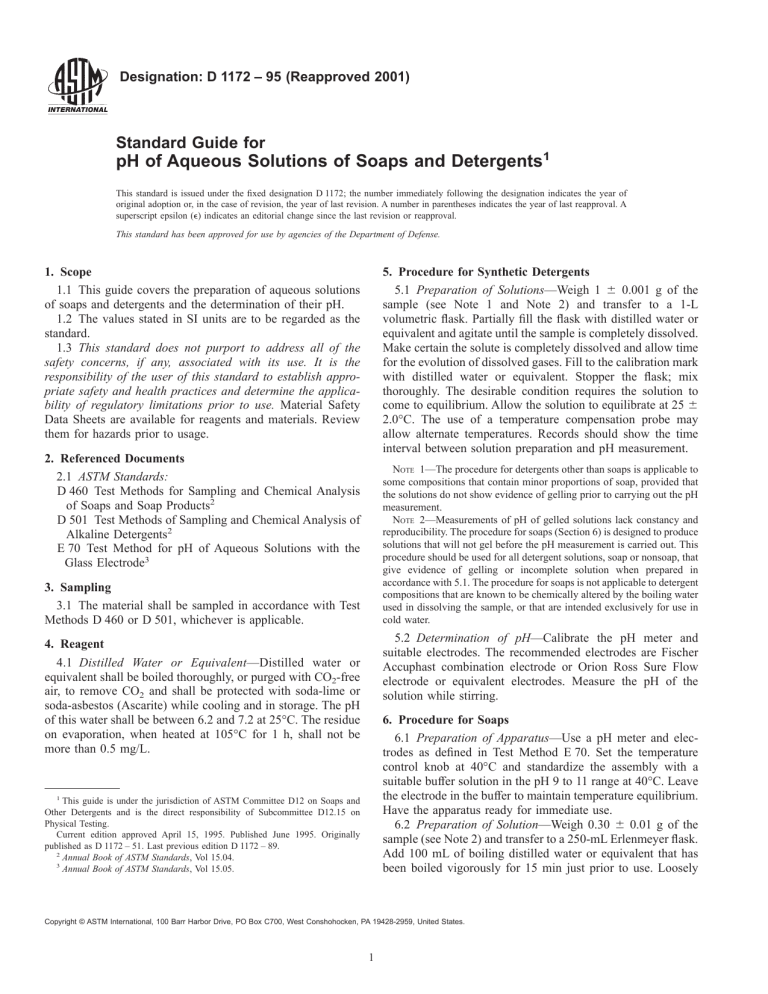
Designation: D 1172 – 95 (Reapproved 2001) Standard Guide for pH of Aqueous Solutions of Soaps and Detergents1 This standard is issued under the fixed designation D 1172; the number immediately following the designation indicates the year of original adoption or, in the case of revision, the year of last revision. A number in parentheses indicates the year of last reapproval. A superscript epsilon (e) indicates an editorial change since the last revision or reapproval. This standard has been approved for use by agencies of the Department of Defense. 5. Procedure for Synthetic Detergents 5.1 Preparation of Solutions—Weigh 1 6 0.001 g of the sample (see Note 1 and Note 2) and transfer to a 1-L volumetric flask. Partially fill the flask with distilled water or equivalent and agitate until the sample is completely dissolved. Make certain the solute is completely dissolved and allow time for the evolution of dissolved gases. Fill to the calibration mark with distilled water or equivalent. Stopper the flask; mix thoroughly. The desirable condition requires the solution to come to equilibrium. Allow the solution to equilibrate at 25 6 2.0°C. The use of a temperature compensation probe may allow alternate temperatures. Records should show the time interval between solution preparation and pH measurement. 1. Scope 1.1 This guide covers the preparation of aqueous solutions of soaps and detergents and the determination of their pH. 1.2 The values stated in SI units are to be regarded as the standard. 1.3 This standard does not purport to address all of the safety concerns, if any, associated with its use. It is the responsibility of the user of this standard to establish appropriate safety and health practices and determine the applicability of regulatory limitations prior to use. Material Safety Data Sheets are available for reagents and materials. Review them for hazards prior to usage. 2. Referenced Documents 2.1 ASTM Standards: D 460 Test Methods for Sampling and Chemical Analysis of Soaps and Soap Products2 D 501 Test Methods of Sampling and Chemical Analysis of Alkaline Detergents2 E 70 Test Method for pH of Aqueous Solutions with the Glass Electrode3 NOTE 1—The procedure for detergents other than soaps is applicable to some compositions that contain minor proportions of soap, provided that the solutions do not show evidence of gelling prior to carrying out the pH measurement. NOTE 2—Measurements of pH of gelled solutions lack constancy and reproducibility. The procedure for soaps (Section 6) is designed to produce solutions that will not gel before the pH measurement is carried out. This procedure should be used for all detergent solutions, soap or nonsoap, that give evidence of gelling or incomplete solution when prepared in accordance with 5.1. The procedure for soaps is not applicable to detergent compositions that are known to be chemically altered by the boiling water used in dissolving the sample, or that are intended exclusively for use in cold water. 3. Sampling 3.1 The material shall be sampled in accordance with Test Methods D 460 or D 501, whichever is applicable. 5.2 Determination of pH—Calibrate the pH meter and suitable electrodes. The recommended electrodes are Fischer Accuphast combination electrode or Orion Ross Sure Flow electrode or equivalent electrodes. Measure the pH of the solution while stirring. 4. Reagent 4.1 Distilled Water or Equivalent—Distilled water or equivalent shall be boiled thoroughly, or purged with CO2-free air, to remove CO2 and shall be protected with soda-lime or soda-asbestos (Ascarite) while cooling and in storage. The pH of this water shall be between 6.2 and 7.2 at 25°C. The residue on evaporation, when heated at 105°C for 1 h, shall not be more than 0.5 mg/L. 6. Procedure for Soaps 6.1 Preparation of Apparatus—Use a pH meter and electrodes as defined in Test Method E 70. Set the temperature control knob at 40°C and standardize the assembly with a suitable buffer solution in the pH 9 to 11 range at 40°C. Leave the electrode in the buffer to maintain temperature equilibrium. Have the apparatus ready for immediate use. 6.2 Preparation of Solution—Weigh 0.30 6 0.01 g of the sample (see Note 2) and transfer to a 250-mL Erlenmeyer flask. Add 100 mL of boiling distilled water or equivalent that has been boiled vigorously for 15 min just prior to use. Loosely 1 This guide is under the jurisdiction of ASTM Committee D12 on Soaps and Other Detergents and is the direct responsibility of Subcommittee D12.15 on Physical Testing. Current edition approved April 15, 1995. Published June 1995. Originally published as D 1172 – 51. Last previous edition D 1172 – 89. 2 Annual Book of ASTM Standards, Vol 15.04. 3 Annual Book of ASTM Standards, Vol 15.05. Copyright © ASTM International, 100 Barr Harbor Drive, PO Box C700, West Conshohocken, PA 19428-2959, United States. 1 D 1172 – 95 (2001) stopper the flask with a clean, neutral, one-hole stopper fitted with a suitable thermometer readable to the nearest 0.1°C in the 25 to 50°C range and so arranged that the thermometer bulb will be completely immersed in the liquid. Agitate the flask and contents to apparently complete solution of the sample; then cool rapidly under tap water to 43 6 0.5°C. Promptly pour enough of the solution into the pH beaker to almost fill it. 6.3 Determination of pH—Determine the pH of the solution at 40 6 2.0°C, while stirring. The recommended electrodes are Fisher Accuphast combination electrode or Orion Ross Sure Flow electrode. ASTM International takes no position respecting the validity of any patent rights asserted in connection with any item mentioned in this standard. Users of this standard are expressly advised that determination of the validity of any such patent rights, and the risk of infringement of such rights, are entirely their own responsibility. This standard is subject to revision at any time by the responsible technical committee and must be reviewed every five years and if not revised, either reapproved or withdrawn. Your comments are invited either for revision of this standard or for additional standards and should be addressed to ASTM International Headquarters. Your comments will receive careful consideration at a meeting of the responsible technical committee, which you may attend. If you feel that your comments have not received a fair hearing you should make your views known to the ASTM Committee on Standards, at the address shown below. This standard is copyrighted by ASTM International, 100 Barr Harbor Drive, PO Box C700, West Conshohocken, PA 19428-2959, United States. Individual reprints (single or multiple copies) of this standard may be obtained by contacting ASTM at the above address or at 610-832-9585 (phone), 610-832-9555 (fax), or [email protected] (e-mail); or through the ASTM website (www.astm.org). 2
